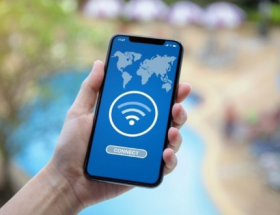If you are a Latino parent living in the United States, you know how important it is for your children to learn English.
Not only to do well in school, but to grow with more opportunities, confidence and integration with the country where you now live.
But the challenge is real: how do you teach English to a child who grew up hearing and speaking Spanish at home? And how do you do it without breaking the bank, especially if you're just starting out here?
The good news is that you don't need expensive courses or complicated methods. Today, there are amazing and free apps, designed especially to teach English to children in a fun, easy and safe way — right on their cell phone.
In this article, we'll show you the best apps, platforms, and tips to help you turn your child's learning into a smooth and effective routine.
Why does starting early make all the difference?
Young children have what experts call a "golden window" for language learning. This means they learn much more easily than adults. When exposed to English daily, even in small doses, they absorb vocabulary, pronunciation, and structures effortlessly.
Starting now can ensure your child is fluent before they even reach adolescence—and that changes everything.
The 5 best apps to teach English to Latino children
Here are the apps most recommended by teachers, parents, and experts. All are compatible with Android and iOS and have free versions.
1. ABCmouse
Created for children aged 2 to 8, the ABCmouse Offers games, songs, stories, and interactive activities. It teaches English progressively, with rewards that keep children motivated.
- Suitable for: young children
- Strong point: well-structured content, approved by educators
2. Lingokids
Designed entirely for children, Lingokids teaches English through games, cartoons, songs, and activities. It's perfect for those starting from scratch.
- Recommended for: beginners
- Highlight: has offline mode and parental controls
3. Khan Academy Kids
Free and ad-free, this app was created by one of the world's largest educational platforms. It features English activities focusing on vocabulary, reading, and listening.
- Suitable for: preschool and elementary school children
- Benefit: complete learning, not just English
4. Duolingo Kids
A version of the popular Duolingo designed for children. The lessons are short and playful, with friendly characters who follow the child's progress.
- Suitable for: children over 5 years old
- Strong point: excellent for daily practice
5. Fun English by Studycat
This app combines games, songs, and stories to teach English with a lot of humor. Perfect for keeping little ones engaged.
- Recommended age: 3 to 10 years
- Differential: super creative games
What about parents who don't speak English?
This is a common concern among many Latino families. But the truth is that you don't need to speak English fluently to help your child. The most important thing is to create an environment where English is present in everyday life.
Here are some simple ideas:
- Watch cartoons in English with Spanish subtitles
- Play children's songs in English at bath time or before bed
- Repeat simple words with your child, even if you are learning together.
- Use apps together — it can be fun for both of you
Remember: your encouragement is more important than your level of English.
Distance learning platforms also help
In addition to apps, there are online platforms that offer bilingual courses, interactive classes and school support for Latino children. Some of them:
▸ Stride Learning
A comprehensive educational platform with programs for elementary and high school students, ideal for families who homeschool or want extra tutoring.
▸ 3P Learning
Offers English and math learning solutions, with a focus on gamification.
▸ VKidz
Aimed at students studying at home, with resources to learn English progressively and adaptively.
These platforms have free versions, trials or affordable plans, and many of them accept parents who are newcomers to the country.
What if my child already speaks Spanish and is learning English at school?
Great! But even so, home reinforcement makes all the difference.
What happens in American schools is that, even with classes in English, many Latino children end up withdrawing because they don't feel confident with the language. Learning at home, in a relaxed way, can help your child:
- Communicate with more confidence
- Improve grades
- Make friends more easily
- Feel more included
A future with more opportunities starts with English
It's not just about speaking English — it's about open doors to your child's futureFrom getting good grades in school to winning scholarships, getting into universities, and getting good jobs, English proficiency is the foundation of everything in the United States.
And the best part: you can start right now, with your cell phone in hand, at no cost.
You don't need to be fluent or spend a fortune to teach your child English. With the right apps and a little routine, you can transform their lives—and yours, too.
Start with 10 minutes a day. Download one of the apps we recommend. Listen to music in English with it. Read a story before bed. These small habits add up and make all the difference.
Your child is Latino, bilingual, and full of potential. And it all starts with you.



